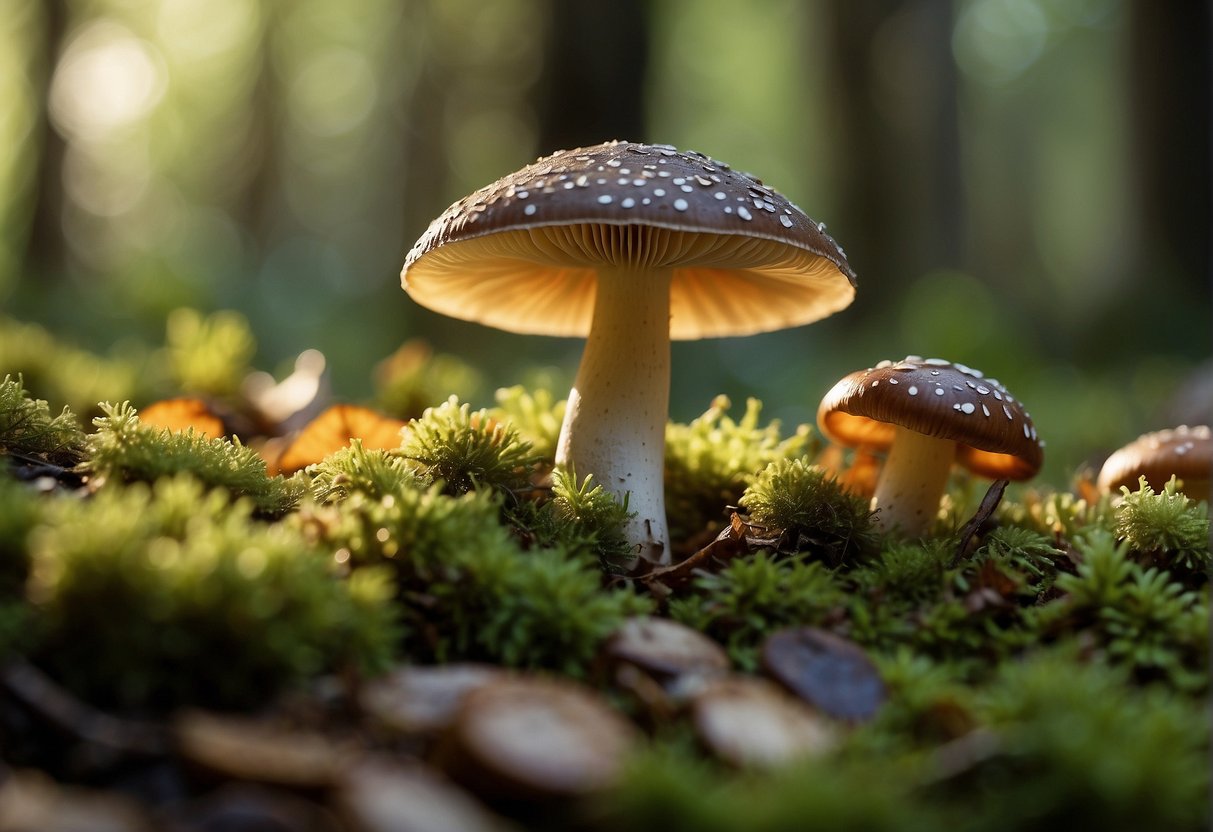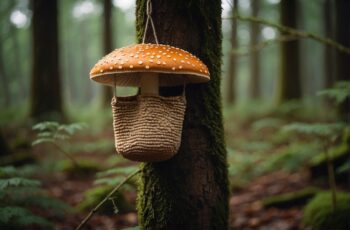Mushroom gathering is an enjoyable way for you to connect with nature and add an exciting dimension to your outdoor adventures. It’s an ancient practice, deeply rooted in human tradition, and it offers you the chance to explore the great outdoors with an eye for the culinary treasures that forests and fields can provide. When you’re foraging for mushrooms, you’re participating in a sustainable activity that not only brings you closer to your ancestral roots but also offers a delightful addition to your meals.

Understanding the intricacies of mushrooms is crucial for a successful foraging experience. Before you set out, you must be able to identify which mushrooms are safe to eat and which could be dangerous, as there can be a fine line between delightful and deadly. It’s important to acknowledge that while many mushrooms are edible and delicious, others can threaten your health, so education and caution are key. By knowing what to look for and where to look, you can avoid the risks and reap the rewards of nature’s bountiful fungi.
Armed with the right knowledge and tools, mushroom foraging can be a fulfilling activity. Carrying a field guide, utilizing a sharp knife for clean cuts, and choosing the proper basket for ventilation will set you up for success in the wild. Remember, always preserve the environment by foraging responsibly, and when in doubt, don’t pick it. With these guidelines in mind, you’re ready to step into the world of mushroom foraging, where each discovery is a potential treat for your tastebuds.
Getting Started with Mushroom Foraging
Before you set out on your mushroom foraging adventure, it’s crucial to equip yourself appropriately and understand where to look. The right gear and knowledge can make the difference between an enjoyable outing and a fruitless endeavor.
Essential Equipment for Foragers
To embark on your mushroom hunting quest effectively, you’ll need a few key pieces of equipment:
-
Basket: An open-weave basket allows for spores to fall through and propagate as you continue your hunt.
-
Field Guides: Arm yourself with reliable field guides to help with mushroom identification. Choose ones with clear photos or illustrations of edible mushrooms.
-
Knife: A small knife is handy for harvesting mushrooms and examining their features.
-
Notebook and Pen: Document your finds and experiences to reference later.
Understanding Mushroom Habitat
Different mushrooms thrive in various environments. Here’s what to look out for:
-
Edible Mushrooms: Often found in moist forests and fields, especially around organic matter like fallen logs.
-
Matsutake Mushroom: Sought after for its distinctive aroma, the matsutake typically grows in coniferous forests near certain trees, such as pines.
-
Habitat Clues: Note the surrounding trees and conditions; many mushrooms have preferred tree partners and soil types.
Equip yourself with these basics, and you’re ready to start foraging responsibly and effectively. Remember, always be certain of a mushroom’s identity before considering consumption. Happy foraging!
Identifying Edible and Poisonous Mushrooms
Mushroom foraging can be a rewarding hobby, but it’s crucial to distinguish safely between edible treasures and their toxic counterparts. Your skill in identification can mean the difference between a delicious meal and a dangerous mistake.
Characteristics of Edible Mushrooms
Chanterelle and morel mushrooms are among the sought-after varieties for foragers due to their distinctive features and savory flavors. Edible mushrooms typically exhibit certain traits, such as:
- Chanterelles: notable for their trumpet-like shape, yellow to orange color, and forked gills.
- Morels: recognized by their pitted, honeycomb-like cap.
Always verify these characteristics thoroughly, as some poisonous mushrooms can closely resemble edible ones.
Recognizing Poisonous Varieties
Poisonous mushrooms, such as the death cap, can be mistaken for safe species. To avoid foraging fatal fungi, remember these identifiers:
- Death Cap: appears often as an innocent white mushroom but is deadly. It has a smooth cap, white gills, and a bulbous base.
- Skirt or ring on the stem and white gills can be warning signs of toxic varieties.
When in doubt, it’s best to leave a mushroom undisturbed. The mantra of experienced foragers is: “When in doubt, throw it out.”
The Role of Spore Printing
A spore print is a critical tool to identify mushrooms accurately. By placing the cap on paper, you can observe the color of the spores, which ranges widely across species. This technique can provide valuable clues:
- Edible mushrooms like the morel will leave a cream or yellow-colored print.
- Poisonous mushrooms might produce a white spore print, but so do some edible species, so this should not be your sole method of identification.
“Mushrooms Demystified” is an excellent field guide that can help you interpret spore prints and other identifying features, enhancing your foraging knowledge significantly.
The Art of Mushroom Hunting

Mushroom hunting combines a knowledge of the local environment with the thrill of the chase. It’s a rewarding activity that requires skill, respect for nature, and a keen eye.
Popular Mushroom Hunting Grounds
Forests across North America serve as prime locales for mushroom enthusiasts. In the Pacific Northwest, damp earth and dense foliage create the perfect habitat for coveted species like the matsutakes. Over in Michigan and in the Northeast, autumn forests often yield a bounty of morels. If you’re in the West Coast regions like California, the woodlands can surprise you with their variety. For the best spots, your local mycological society can guide you to areas where gathering mushrooms is both rich and respectful to the local ecosystem.
Timing and Conditions for Mushroom Gathering
For the best experience, tune into the seasonality and weather patterns of your region. Morels appear in the springtime, while matsutakes are typically gathered in the fall. Always monitor local weather conditions, as mushrooms flourish after rain. Remember, the forest service can provide insights into when various species are most abundant, especially in states like Oregon and Colorado, known for their mushroom-friendly climates.
Legal and Ethical Considerations
Before heading out, it’s crucial to understand the regulations governing mushroom gathering. States like New York and Canada have specific laws to maintain sustainability. Always obtain permits if required and adhere to any guidelines set forth by the forest service. Be an ethical forager: never over-harvest and always leave the smallest mushrooms to grow. Be sure to foster a sustainable practice, not just for the sake of regulations but for the future of your favorite mushroom hunting grounds.
Mushroom Foraging Safety and Culinary Tips
Venturing into the wild to forage for mushrooms is both an engaging pursuit and a way to add a fresh twist to your meals. However, safety should never take a backseat, and it’s essential to cook your finds thoroughly to avoid any health risks.
Safety Practices for Mushroom Gatherers
- Know Your Species: Misidentifying mushrooms can be fatal. Before you set out, equip yourself with a reliable mushroom foraging guide specific to your region. Consider using smartphone apps designed to assist with identification.
- Forage Responsibly: Take only what you need, cut mushrooms at the base rather than pulling them out, and leave the area as untouched as possible. This helps preserve mushroom colonies and the eco-balance of the forest.
Preparing and Cooking Wild Mushrooms
- Clean and Inspect: Once back from foraging, clean your mushrooms gently with a brush to remove debris. Inspect them again to ensure none are poisonous.
- Cook Mushrooms Thoroughly: All wild mushrooms should be cooked thoroughly. This not only neutralizes any potentially harmful compounds but also enhances flavor. Try incorporating your foraged mushrooms into recipes like hearty soups to savor their earthy tones.


